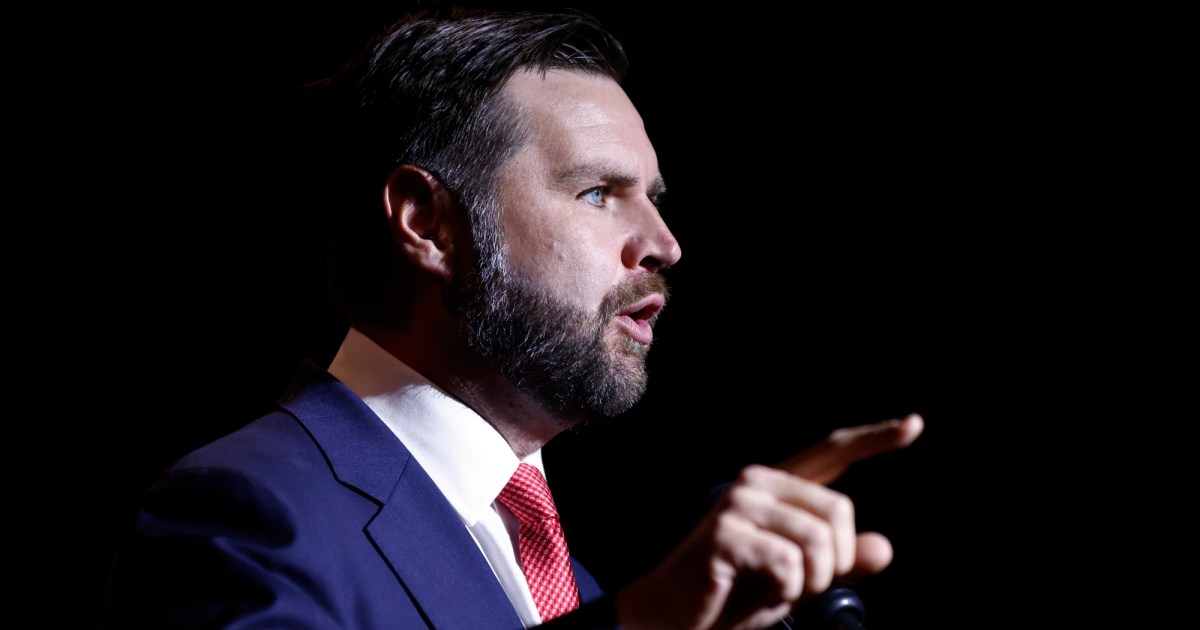A hulking steel plant in Middletown, Ohio, is the city’s economic heartbeat as well as a keystone origin story of JD Vance, the hometown senator now running to be Donald Trump’s vice-president.
Its future, however, may hinge upon $500 million in funding from landmark climate legislation that Vance has called a “scam” and is a Trump target for demolition.
In March, Joe Biden’s administration announced the US’s largest ever grant to produce greener steel, enabling the Cleveland-Cliffs facility in Middletown to build one of the largest hydrogen fuel furnaces in the world, cutting emissions by a million tons a year by ditching the coal that accelerates the climate crisis and befouls the air for nearby locals.
…
When campaigning for the Senate in 2022, Vance said Biden’s sweeping climate bill is “dumb, does nothing for the environment and will make us all poorer,” and more recently as vice-presidential candidate called the IRA a “green energy scam that’s actually shipped a lot more manufacturing jobs to China.”
Register to vote: https://vote.gov/



Hey, it’s a “hydrogen” thing that’s actually not blatant greenwashing, for once! I was skeptical, so I read through to the press release and Wikipedia to figure out what it was talking about, and now I’ll share with the class:
Calling this a “hydrogen fuel furnace” is misleading. The point of this thing isn’t to use hydrogen as an energy storage medium and then burn it to produce heat/fuel-cell-react it to produce electricity. Instead, the point is to use the hydrogen itself as a reactant in the reduction reaction to convert iron oxides to metallic iron. (In other words, there’s actually a good reason for it to use hydrogen specifically, unlike the hydrogen cars we more commonly hear about.)
Specifically, reduction of iron typically occurs via two paths, using either carbon monoxide (CO) or hydrogen gas (H2). In a “normal” foundry these gases are typically obtained as combustion products of burning coal and the reduction happens along a mix of the two paths.
3 Fe2O3 + CO ⟶ 2 Fe3O4 + CO2
Fe3O4 + CO ⟶ 3 FeO + CO2
FeO + CO ⟶ Fe + CO2
3 Fe2O3 + H2 ⟶ 2 Fe3O4 + H2O
Fe3O4 + H2 ⟶ 3 FeO + H2O
FeO + H2 ⟶ Fe + H2O
Using pure H2 as the reducing gas eliminates the first path, and produces the iron metal without needing any carbon (assuming it used “green hydrogen” (produced by electrolyzing water using electricity from renewable sources) rather than “blue hydrogen” (produced from natural gas), as doing otherwise would completely defeat the purpose).
There are two caveats, here:
Steel plants still need carbon inputs in order to carburize the iron into steel. That’s not a problem in terms of global warming emissions as the carbon is consumed in the process and becomes part of the steel, but it does mean the thing would still consume fossil fuels. (Maybe there’s an opportunity in the future to hook it to CO2-capture systems and make it net-negative?)
The press release describes the furnace being funded as “hydrogen-ready flex-fuel”. In other words, it’s not actually going to run in the environmentally-superior mode I described; it’s just capable of it. The actual magnitude of improvement will be fuck-all until they go further and install a “green hydrogen” source at some undetermined later date that the press release doesn’t even contemplate.
Remember kids, if someone proposes using hydrogen for something other than fertilizer or steel or rocket fuel, it’s not a good application of hydrogen
Thanks for the effort. It was very informative.